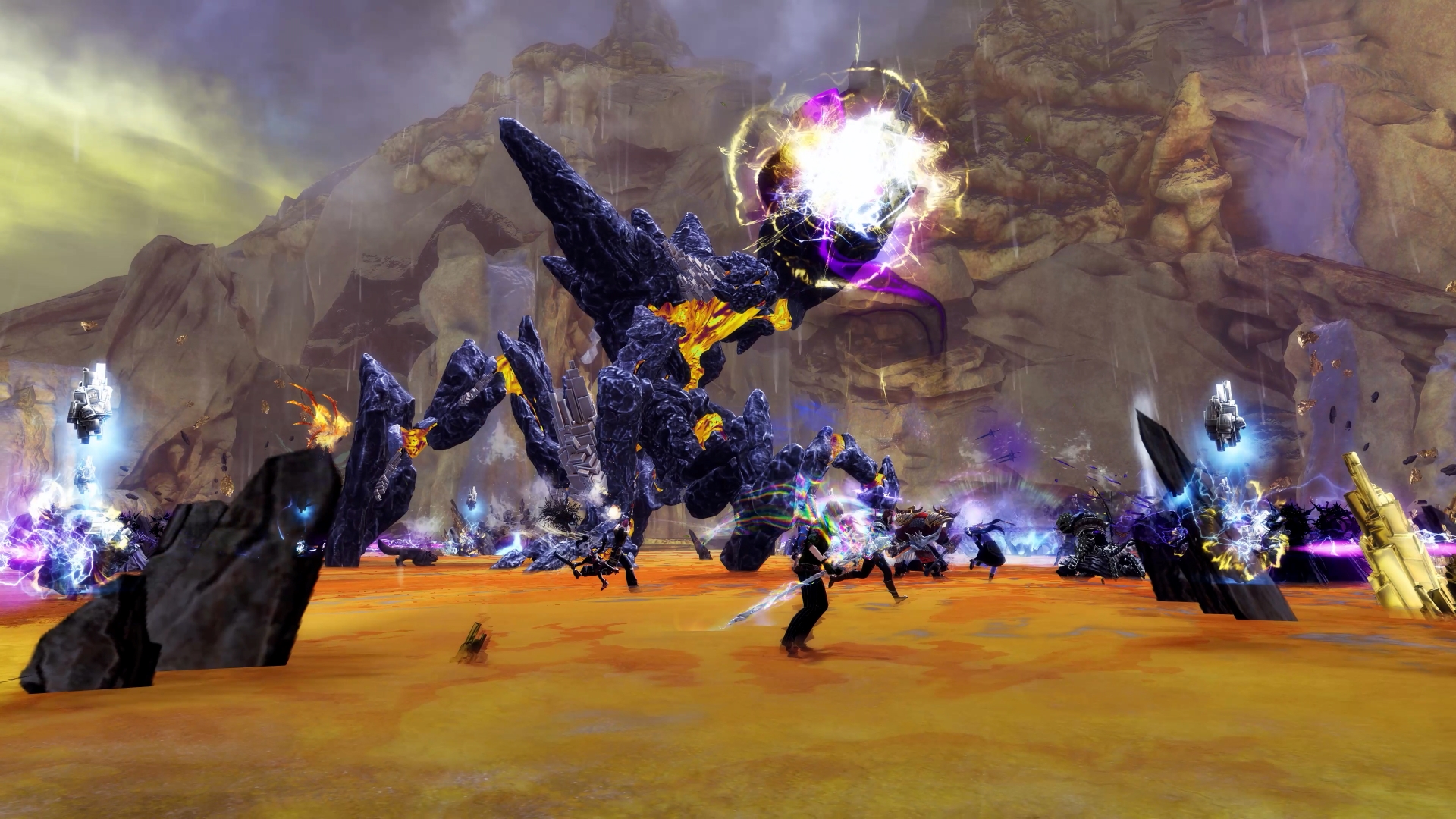
Last year, Guild Wars 2 switched to a new annual expansion cycle—swapping out the sporadic expansions of old for more regular, smaller releases. Expansions now launch with two open world maps and a handful of new features, and then gets filled in across the rest of the year through major quarterly updates.
The first of this new style of expansion, last year's Secrets of the Obscure, suffered from being ArenaNet's first attempt at working to this scale—attempting to cram too much story into too little space, with later updates suffering for it. This year's expansion, Janthir Wilds, is a clear attempt to evolve and adapt—to take what the studio learned and to move forward with something that better fits the new structure.
So far it's mostly been a success. But the big test of this year's expansion happens today, with the release of its first quarterly update, Godspawn. Instead of expanding the world map, it adds the game's first raid in over five years.
This is something of a gamble. Part of the reason it's been so long since the studio last released a new raid wing is that the game's playerbase tends to skew more casual. You'll find plenty of people pottering around open world maps completing meta events and hunting for achievements. But the raid LFG menu tends to be much quieter.
ArenaNet's solution here is twofold. First, the normal mode, which launches today, is designed to be on the easier end of the difficulty scale—an attempt to bridge the gap between two very different sets of the game's playerbase. Similar to the more recent Strike missions—shortform boss encounters with some raid-lite mechanics—the studio then plans to add challenge modes for all bosses in a future update, as well as a legendary mode for the final boss. This latter difficulty sounds similar in scope to the legendary version of the recent Temple of Febe Strike mission—an encounter that took the game's top team nine whole days to finally defeat.
Secondly, the map and bosses of the new raid are being reused elsewhere in the game—both in this update's story, and in the new 50-player Convergence event. Each is designed to put its own spin on the encounter. The Convergence, which I had the chance to play through in a preview event last week, takes the form of a story the Kodan leader Stoic Alder is telling some cubs—with randomisation in its events and challenges as he misremembers and embellishes elements of the tale.

It's a fun conceit, and I broadly understand why it makes sense for the game's current approach to reintroducing raids. From a player perspective, the chance to at least see the space you'll be raiding in may mean it feels less intimidating to make the jump—even if the specifics of the mechanics are changed. And from a development perspective, this is likely the only way we'd ever see another raid given the mode's much lower playerbase and the time and resources it takes to make one.
But as someone who has run all of the game's current raids, I will admit to some doubts about how this approach will land. There's a simple thrill to encountering a new, custom space designed specifically for the encounter you've fought towards—the shifting platforms of Xera, the gothic extravagance of Dhuum, whatever the hell nonsense is going on with Qadim. This alternate approach—remixing a space into multiple forms—is very sensible. I understand the reasoning, and even agree with it. But there's a part of me that can't help but feel that it lessens the impact of the game's most aspirational end game activity.
This is a tension that's much broader than just Guild Wars 2. How to effectively sate the demands of a playerbase—often one at odds with each other in terms of skill, experience and expectation—is inevitably the biggest challenge that any live-service game needs to solve. Inevitably there have to be compromises.
So far I've been broadly happy with what Janthir Wilds has done to refine its release schedule. The expansion's first map is a triumph—a return in scope to some of the classic open world zones, and one that feels packed full of things to discover. (Alas, the second map feels comparatively barren—meaning even if things are moving in the right direction, there's still improvements to be made.) While I'm not fully on board with this compromise just yet, I am still interested to see how it lands with the playerbase at large—and how this particular experiment gets adapted and refined in future. It's a gamble, but one that I'd be happy to see pay off.







